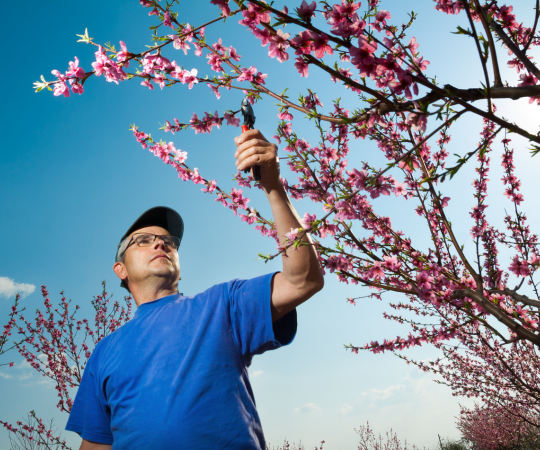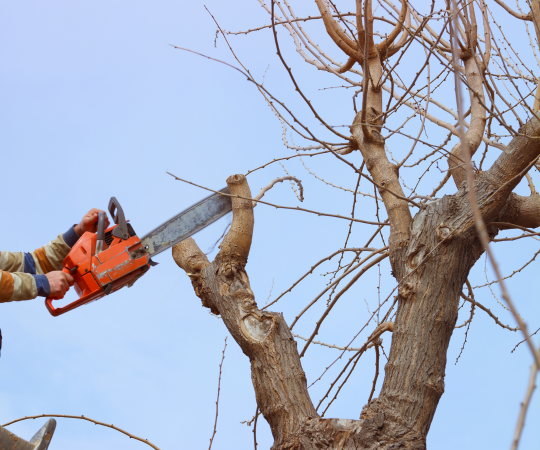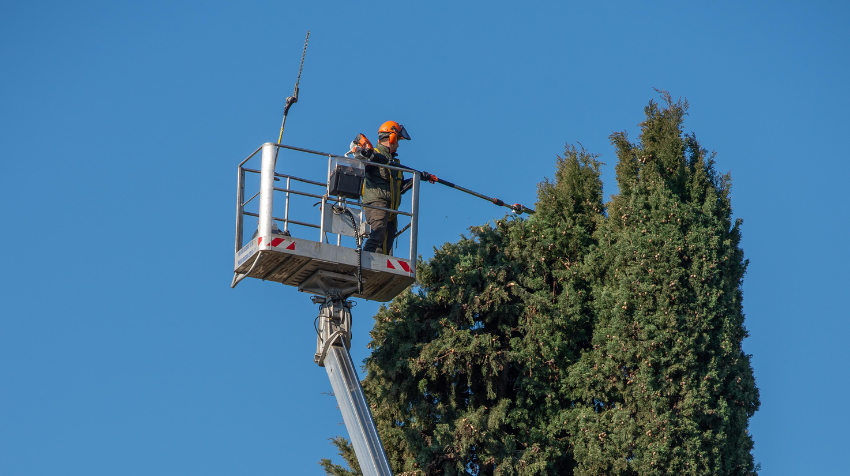The Abcs Of Fruit Tree Pruning: A Comprehensive Guide To Enhance Your Harvest”
If you’re a fruit tree owner, you know the feeling of eagerly awaiting a bountiful harvest. But did you know that proper pruning is essential to enhancing your yield?
Fruit tree pruning can seem daunting at first, but with the right tools and knowledge of techniques, it can be an enjoyable and rewarding experience.
In this comprehensive guide, we’ll take you through the ABCs of fruit tree pruning. You’ll learn why it’s important to prune your trees, how to choose the right tools for the job, and when and how frequently to prune.
We’ll also cover different growth patterns and techniques for pruning various types of trees. By following our advice on maintenance and care, you’ll be well on your way to a successful harvest season.
So grab your shears and let’s get started!
Understand the Importance of Pruning
You can’t afford to skip pruning if you want a bountiful crop. Pruning is essential for fruit trees as it helps increase the quality and quantity of the fruits produced. It also promotes better overall tree health by removing dead, diseased, or damaged branches.
Pruning allows for improved air circulation and sunlight penetration throughout the tree which, in turn, leads to an increased number of flowers and fruits. Additionally, pruning helps maintain the size and shape of the tree, making it easier for harvesting and general maintenance.
So don’t overlook this crucial step in your fruit tree care routine. Now that you understand its importance, let’s move on to choosing the right tools for successful pruning.
Choose the Right Tools
When it comes to pruning your fruit trees, choosing the right tools is crucial. You’ll want to make sure you have the right type of pruning shears for the job, whether that’s bypass or anvil style.
Other essential tools include a saw for larger branches, loppers for thicker growth, and gloves to protect your hands from thorns and cuts. Knowing which tools are best suited for each task will help you achieve a better harvest and keep your trees healthy.

Types of Pruning Shears
If you want to make sure your fruit trees grow healthy and strong, it’s important to know the different types of pruning shears available. Here are five common types:
- Bypass Pruners: These are the most common type of pruning shears used for cutting green wood up to ¾ inch in diameter. They work like scissors with two sharpened blades that bypass each other.
- Anvil Pruners: These have one sharp blade that cuts against a flat surface or anvil, making them ideal for cutting dry or dead branches up to 1 inch in diameter.
- Ratchet Pruners: These are designed with a ratchet mechanism that allows you to apply more leverage with less effort when cutting thicker branches up to 2 inches in diameter.
- Hedge Shears: These are long-bladed pruning shears used for shaping hedges and trimming shrubs. They can cut through thin stems up to half an inch thick.
- Pole Pruners: These have a long handle and a saw-like blade at the end, allowing you to reach high branches without using a ladder.
Knowing which type of pruning shear is best suited for your task will save you time and energy while ensuring that your plants remain healthy and well-maintained.
Other essential tools include gloves, safety glasses, loppers, hand saws, and chainsaws – all of which we’ll cover next.
Other Essential Tools
Now that you’ve learned about the different types of pruning shears, it’s time to explore other essential tools that can help you maintain a healthy and vibrant garden.
One of these tools is a good pair of loppers, which are ideal for cutting thicker branches that pruning shears cannot handle. They come in various sizes, so choose one that fits your needs.
Another important tool is a pruning saw, which is used to remove large branches or damaged limbs from trees. A high-quality pruning saw will make the job easier and more efficient.
In addition to loppers and a pruning saw, there are other essential tools that every gardener should have on hand. These include gloves to protect your hands from cuts and scratches, as well as eye protection such as safety glasses or goggles when using sharp tools.
A sturdy ladder is also necessary for reaching higher branches safely. With all of these tools at your disposal, you can ensure that your fruit trees receive the care they need to thrive and produce an abundant harvest year after year.
As you learn about growth patterns in fruit trees in the next section, keep in mind how these essential tools can be used to shape and maintain those patterns effectively without causing harm to the tree or yourself.
Learn About Growth Patterns
You’ll discover how to understand the way your trees grow and use that knowledge to keep them healthy and thriving. Different fruit trees have different growth patterns, so it’s important to know what you’re dealing with before you start pruning.
For example, apple trees tend to produce fruit on spurs that grow off older wood, while peach trees produce fruit on new wood each year. By understanding these patterns, you can determine which branches are most likely to produce fruit and which ones should be removed.
You can also adjust your pruning techniques based on the age of the tree and its overall health. This will help ensure that your tree produces a bountiful harvest year after year. As you gain an understanding of how your particular fruit tree grows, it’s important to consider the timing and frequency of pruning.
Timing and Frequency of Pruning
Knowing when and how often to trim your fruit tree is crucial for its growth and productivity, so make sure to pay close attention to the timing and frequency of pruning. The most important thing to consider is the age of your tree. Younger trees are more vigorous and require more frequent pruning than mature trees.
For example, a newly planted fruit tree should be pruned in its first year after planting, then again in its second year, and every other year thereafter.
Another factor to consider is the season. Winter is the best time for major pruning because it allows you to remove any dead or diseased branches without harming the tree’s overall health. However, avoid pruning during periods of extreme cold or wet weather as this can damage the tree further.
Additionally, avoid summer pruning as it can stimulate new growth that may not have enough time to harden off before winter sets in. In short, timing and frequency of pruning are key factors in achieving a bountiful harvest from your fruit tree.
Now that you know when and how often to prune your fruit tree, let’s move on to techniques for pruning them effectively without damaging their structure or compromising their health.
Techniques for Pruning
In this section, let’s explore some effective techniques for pruning your fruit trees without causing damage or compromising their health.
First off, it’s important to understand that different types of fruit trees require different pruning techniques. For instance, you’ll want to prune peach trees in a vase shape while apple and pear trees are pruned into a central leader shape.
Furthermore, it’s best to prune in the dormant season when the tree is not actively growing and less susceptible to disease.
When pruning, make sure to use sharp and clean tools to avoid damaging the tree. Cut back branches that are too long or crossing over each other as these can cause damage or prevent proper air circulation. Don’t be afraid to remove dead or diseased wood either- these can harm the overall health of your tree if left unattended.
With these tips in mind, you’re well on your way to mastering fruit tree pruning! Now let’s move on to maintenance and care for even better results.
Maintenance and Care
Now that we’ve learned how to prune our fruit trees effectively, it’s essential to understand the importance of ongoing maintenance and care for healthy growth and a bountiful yield.
Pruning is just one aspect of tree care, but there are other tasks you need to perform regularly to keep your trees in good health. These tasks include watering, fertilizing, pest control, and disease prevention.
Watering is crucial for fruit tree growth and development. You should water your trees deeply once a week during the growing season or as needed depending on rainfall levels.
Fertilizing helps provide nutrients that the tree needs for healthy growth and productivity. Use a balanced fertilizer with an equal ratio of nitrogen, phosphorus, and potassium.
Pest management involves monitoring your trees regularly for signs of insect infestations or damage from diseases such as brown rot or apple scab.
Finally, pruning will help maintain the shape of the tree while also removing dead branches or diseased wood. By following these steps, you can ensure that your fruit trees thrive year after year!
Frequently Asked Questions
What are some common mistakes to avoid when pruning fruit trees?
When it comes to pruning fruit trees, there are common mistakes that you should avoid.
Did you know that over-pruning can actually decrease the amount of fruit your tree produces? It’s true!
One mistake people make is cutting off too many branches and leaving their tree vulnerable to disease and pests.
Another common mistake is not properly removing dead or diseased wood, which can spread throughout the entire tree if left untreated.
It’s important to strike a balance between removing enough branches for proper growth and not doing too much damage in the process.
With careful attention and knowledge, you can avoid these mistakes and enhance your harvest for years to come.

How do you determine when a fruit tree is too old to prune?
If you’re wondering whether or not your fruit tree is too old to prune, there are a few things to consider. First of all, if the tree is no longer producing fruit or has significantly decreased in yield, it may be reaching the end of its life and pruning won’t make much of a difference.
Additionally, if the tree has developed large dead spots or major structural issues that can’t be corrected through pruning, it may be time to consider removing it altogether. However, if your tree is still relatively healthy and producing fruit, there’s no reason why you can’t continue to prune it as needed to maintain its shape and promote growth.
Just keep in mind that older trees may have more brittle branches and require a gentler touch when pruning to avoid damaging them.
Can you prune fruit trees during any season or are there specific times of the year that are best?
Pruning fruit trees is an essential task for maintaining their health and enhancing your harvest. You may be wondering if there are specific times of the year that are best for pruning, and the answer is yes!
The ideal time to prune fruit trees varies depending on the tree’s type and location, but generally, it should be done during the dormant season when there’s no active growth. This allows you to see the tree’s structure clearly and make strategic cuts without damaging any new growth.
However, some trees may benefit from a summer pruning to remove diseased or damaged branches. Remember to always use sharp tools, make clean cuts at a 45-degree angle, and avoid removing more than one-third of the tree’s canopy in one session.
By following these guidelines, you can ensure your fruit trees will thrive and produce bountiful yields for years to come!
How do you prevent disease and pests from affecting your fruit trees after pruning?
To prevent disease and pests from affecting your fruit trees after pruning, there are a few steps you can take.
First, make sure to sanitize your pruning tools before and after each use to prevent the spread of any potential diseases.
Additionally, consider using organic pest control methods such as neem oil or insecticidal soaps to keep pests at bay.
Another helpful tip is to prune during dry weather conditions as wet and humid weather can promote fungal growth on freshly pruned areas.
Finally, regularly inspect your trees for any signs of disease or pests and address them promptly to avoid further damage.
By taking these precautions, you can help ensure a healthy and fruitful harvest from your fruit trees year after year.
Are there any special considerations for pruning dwarf fruit trees compared to standard-sized ones?
Pruning dwarf fruit trees can be like sculpting a bonsai tree. You need to carefully shape and control the growth of the tree to ensure it produces a bountiful harvest without becoming too large or unwieldy.
When pruning, remember that dwarf trees have less energy reserves than their full-sized counterparts, so you want to avoid cutting back too much at once. Start by removing any dead or diseased wood, then thin out any branches that are crossing and rubbing against each other.
You’ll also want to keep an eye on the height of your tree since dwarf varieties tend to produce fruit closer to the ground. With some careful attention and pruning techniques, you can enjoy delicious fruit from your dwarf tree for years to come.
Conclusion
Congratulations! You’ve just completed reading a comprehensive guide on fruit tree pruning. Undoubtedly, you’re now equipped with the knowledge to enhance your harvest.
Remember that pruning is essential for maintaining the health of your fruit trees and maximizing their productivity. By carefully selecting the right tools, understanding growth patterns, timing and frequency of pruning, as well as mastering various techniques for pruning, you can achieve excellent results.
Did you know that a well-pruned fruit tree can produce up to three times more fruits than an unpruned one? Imagine walking into your backyard and seeing an abundance of ripe fruits hanging from your beautifully pruned trees. The sight is simply breathtaking!
It’s time to roll up your sleeves and get started on transforming your fruit trees into productive assets in your garden. With patience, dedication, and attention to detail, you’ll soon reap the sweet rewards of your labor.
Remember that like any other plant in your garden, fruit trees require maintenance and care throughout their lifespan. Regularly inspecting them for pests or diseases will help prevent infestations from spreading and causing significant damage. Watering them appropriately during dry seasons will also keep them healthy, while fertilizing them with nutrients will ensure they produce high-quality fruits.
In conclusion, we hope this guide has been helpful in providing valuable insights into the art of fruit tree pruning. Follow these tips diligently in caring for your fruit trees so that they may thrive year after year.
Related Source


